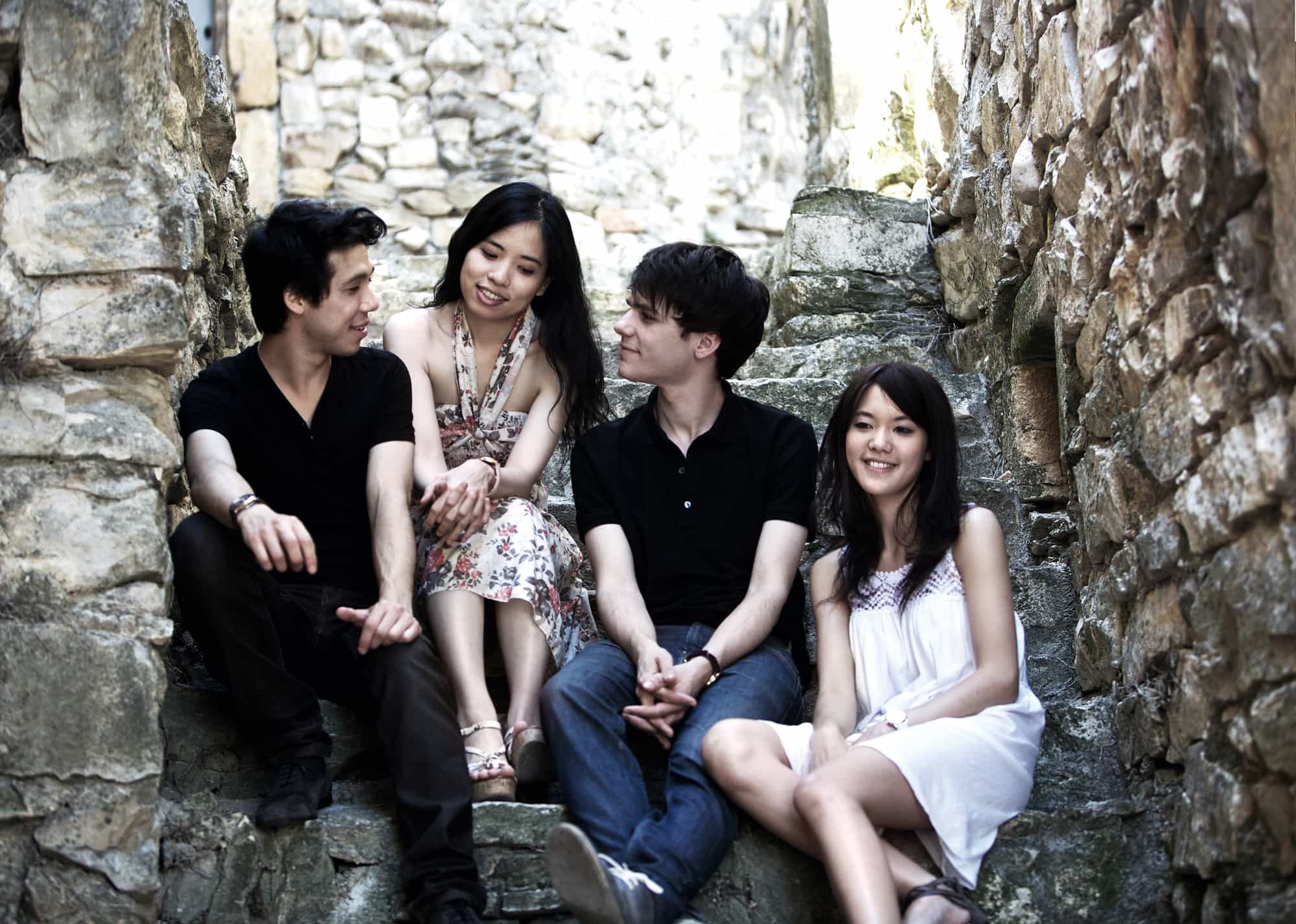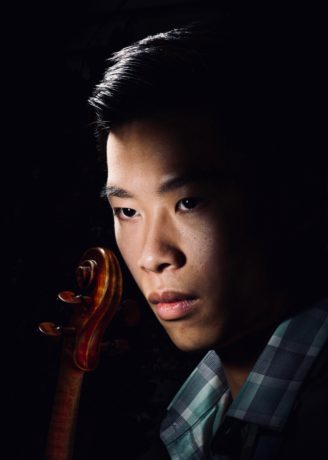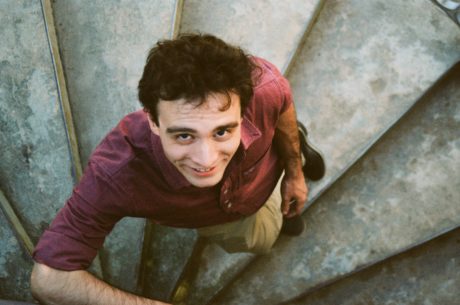Here’s a thought: Older virtuosi are boring.
That’s not original to me, but to an audience member who offered his views during a concert intermission recently. We were at the Phillips Collection for a performance given by the Hermès Quartet, featuring guest soloists, 22-year-old Canadian violinist, Kerson Leong and 27-year-old French pianist, Jonathan Fournel.

My fellow music enthusiast reasoned that the older soloists get, the less pliant their brains, and in particular, the prefrontal cortex that favors prudence above risk. The upshot being that older musicians’ choices are staid in comparison to those of their younger counterparts.
It wasn’t something I had considered before, but while listening to the sextet rip their way through Ernest Chausson’s Concert for Violin, Piano, and String Quartet in D Major, Op. 21, I was inclined to agree with the correlation between youth and thrill-seeking part of my seatmate’s analysis, if not the stodgy old boring people part.
I had already noted Leong’s hauteur in the show’s first half during his gutsy rendition of the 19th-century Belgian Eugène Ysaÿe’s Légende Norvégienne, a sublime meditation for violin and piano which has only recently been discovered. Leong completed the opening bars, then turned 180 degrees to give Fournel a withering look, however fleeting, to ensure the pianist would enter the work as written, or at least as he expected. His command established, Leong proceeded to stun the audience, daring them to notice the occasional waver in his sostenuto, because, hey, the rest of it was so damned good and who expects anyone to hold a note pianissimo for that long?
If Fournel noticed the challenge, he didn’t let on as he sculpted tender phrases from this achingly beautiful work which, before merging into an intimate duet, begins as a sort of call and response between the two instruments, the violin naturally leading the way, given that Ysaÿe was himself the rock star violinist of his era spanning just before, during, and after La Belle Époque. The music is so bare and sensual, with extraordinary passages of longing and finding, it’s almost embarrassing to hear, as though you want to turn off the lights and avert your eyes to ensure the music’s privacy. And yet, it’s so compelling, naturally we are all willing voyeurs.

The concert was the last of three ancillary events in support of the Phillips’ current exhibition, Bonnard to Vuillard: The Intimate Poetry of Everyday Life, The Nabi Collection of Vicki and Roger Sant, which closes on January 26. The Nabis (from the Hebrew for “prophet”) were a fistful of young, late 19th-century French painters, typically associated with the Symbolist movement that sought to penetrate life’s deeper meanings through symbolic representations of the mundane.
Among the Nabis’ most prominent members was Maurice Denis, who spoke often of how sound and color were echoes of the same energetic phenomena. Denis, perhaps most of all the Nabis, was inspired by Paul Gauguin’s earlier exploration of the intersection of music and art where, stripped of structure, Gauguin theorized was the purest experience of life’s vibratory force.
You could say, the Nabis were all about teaching old dogs new tricks, and although their movement within a movement lasted only nine years, it presaged the expressionist likes of Picasso in art and Arnold Schoenberg in music.
The Paris-based Hermès Quartet musicians are the twenty-something violinists Omer Bouchez and Elise Liu, violist Yung-Hsin Chang, and cellist Christine Lee. They began their concert with Claude Debussy’s String Quartet in G Minor, Op. 10. This moody, exotic 1893 work blatantly prefigures the composer’s 1905 La Mer symphonic tone poem evocative of the ocean.
If the technology of his day had allowed, the Symbolist Debussy certainly would have pioneered electronic music to create the synesthetic soundscapes he heard in his head. Instead, the Hermès Quartet members coaxed such dark blue and green notes from their instruments, Debussy’s fixation on approximating the color of sound seemed not just possible but obvious. The perfectly synchronized playing of gently trembling passages by Bouchez and Liu briefly moved me to tears, while Chang and Lee’s deeper notes offered calm sustenance.
Risk-taking was evident all around during the program’s second half which consisted entirely of the Chausson. Titled a “concert” rather than a concerto, each instrument is still highlighted, even if the score favored Leong and Fournel. The pianist burst open the work in a pounding three-octave phrase before the rest joined in, repeating the phrase during the first movement entitled “Décidé” that was indeed decidedly pyrotechnical. The sextet demonstrated their fearlessness throughout the work in an exploratory interplay of timbre and texture, sometimes arpeggiated, sometimes in rounds, sometimes plucked. The overall effect was bracing.
As to whether older musicians lack the temerity to bust loose, let’s have a look at Chausson. When this work was published in 1891, he was 36 years old, and so a decade beyond the time scientists now say is when our capacity for executive function has found its groove, maybe even its rut.
Chausson was notorious among his younger contemporaries such as Debussy for his backward-looking fondness for German Romanticism compared with their use of impressionistic tones. This work, however, exposes Chausson’s internal struggle to embrace the future. Listening to the syncopation in the work’s final movement confirms his willingness to do so. The piece declares Chausson’s acceptance of his contemporaries’ experimentalism, but with firm appreciation for what came before.
Three cheers for maturity.
Especially when performed with such gusto as was the wont of this sextet, Chausson’s “concert” is a thrilling experience of what it must have felt like to stand between the old and new of a rapidly modernizing industrial Europe.
The pensive “Sicilienne” and the mournful “Grave,” the work’s second and third movements, in particular, create a bridge between that era’s favored evocative tonality, and what was soon to come from the likes of Sergei Rachmaninoff and his explosive piano concerti and Ralph Vaughan Williams with his lush but structured string arrangements.
Swept along in the “Très animé” finale’s tide of future-facing musical excitement, there was a moment of surreality upon hearing Chausson’s intimations of the coming sounds of the 20th century rushing at the audience from the seemingly primitive sources of mere sticks tied with horsehair and wooden boxes strung with steel-core string.

In the Chausson, Leong was the only performer who stood throughout, alligator wrestling his violin into submission. Contrast his attack with the sweeter caresses of sound from Bouchez and Liu. Both approaches worked, however, and together this created a playfulness where more than once it seemed they were egging one another on rather than breathlessly trying to keep up. Such was their charming comradery. As a singular sound, the sextet was forthright and bright, even in the darker passages. I took this as an assertion of their confidence: These young virtuosi do not hide behind the score.
Three more cheers for taking a chance and declaring yourself to the world.
In all, the marriage of youth and wisdom consummated between the collective of Leong, Fournel, and members of the Hermès Quartet and their fin de siècle programming selections, made for an exciting concert that averred classical music’s place in our modern day.
Sponsored by the Embassy of Belgium, and in partnership with the Queen Elisabeth Music Chapel in Waterloo, Belgium where Leong is an associated artist, the program opened with remarks from Belgian ambassador to the US, Dirk Wouters, who acknowledged Portugal’s own US ambassador, Domingos Fezas Vital, who was also in attendance in this sold-out performance.
Running Time: 90 minutes, with a 20-minute intermission.
Quatuor Hermès (The Hermès Quartet), with Kerson Leong and Jonathan Fournel, performed on Sunday, January 12, 2020, in the Phillips Collection Music Room, 1600 21st Street NW, Washington, DC. For tickets and information on future concerts at the Phillips Collection, go online.




